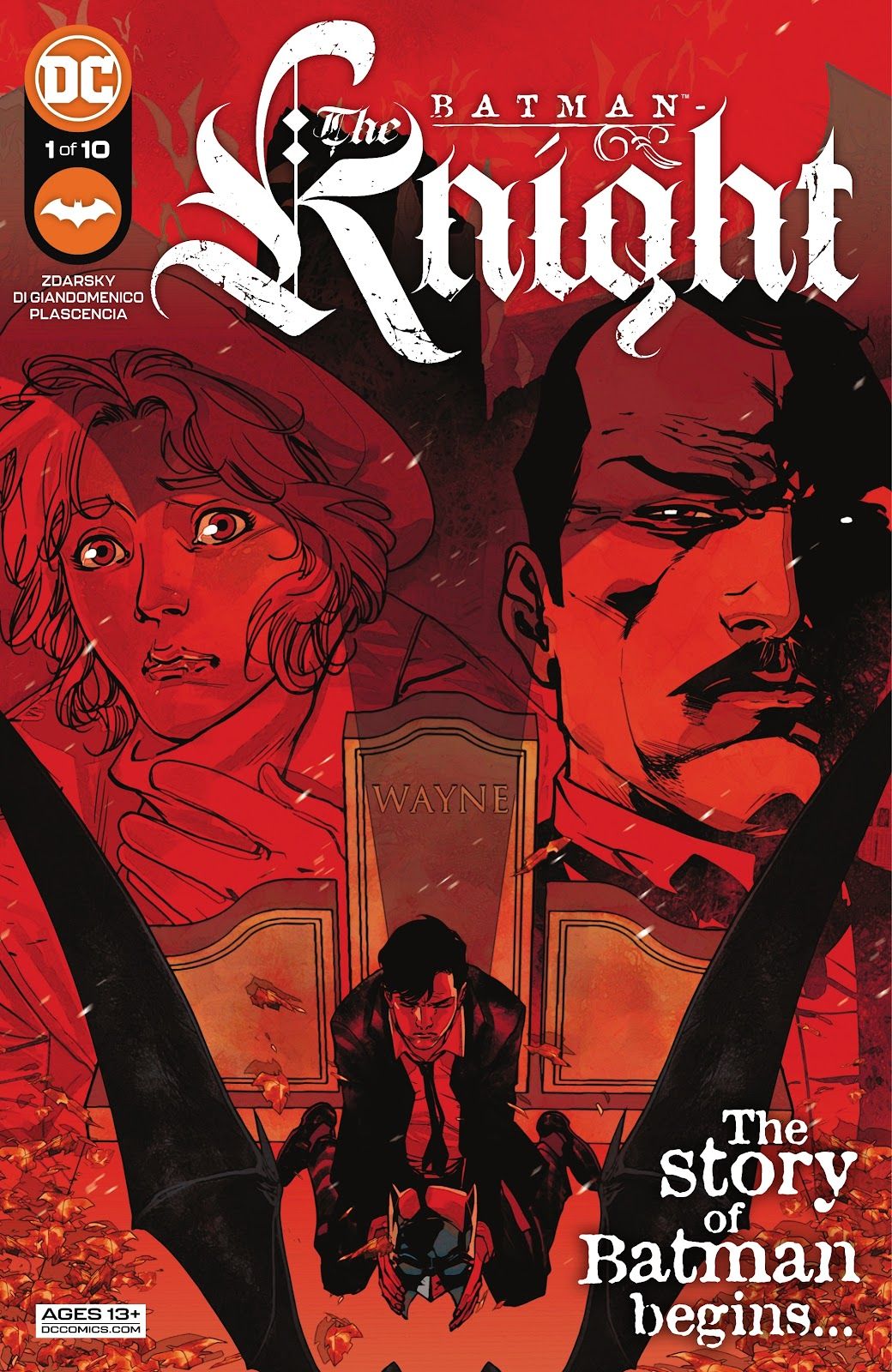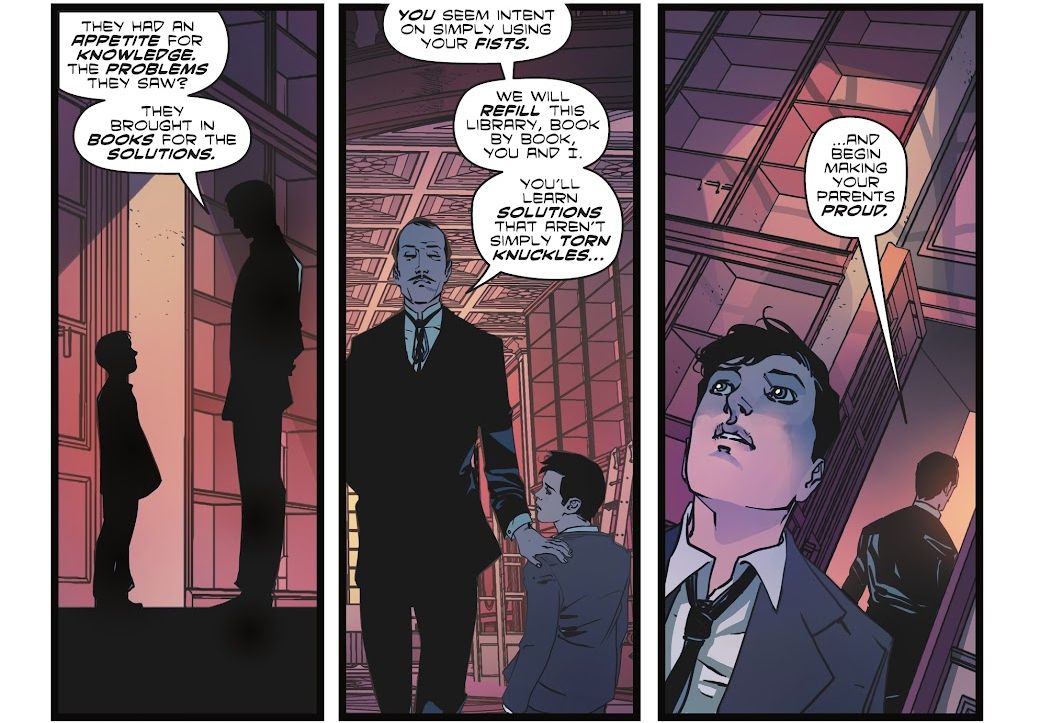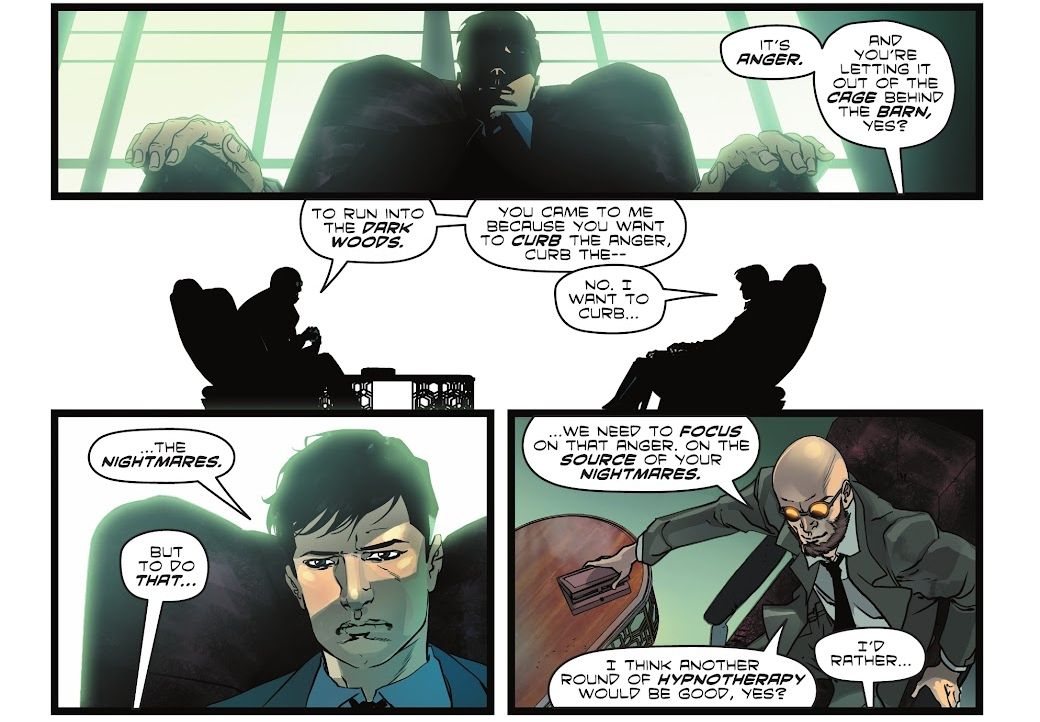DC's Batman: The Knight #1
- WRITER
- Chip Zdarsky
- Artist
- Carmine Di Giandomenico
- Letterer
- Pat Brosseau
- Cover Artist
- Carmine Di Giandomenico
- Publisher
- DC Comics
- Price
- 4.99
- Release Date
- 2022-01-18
- Colorist
- Ivan Plascencia
The tragic loss of Bruce Wayne's parents is one of the most pivotal points in Batman's mythos. Many scribes have tried retelling this significant part of Bruce's life -- from a traumatized child to an amateur crimefighter -- for the modern audience, and in turn, they've left their mark on the character. Multiple Eisner award-winner Chip Zdarsky is the latest writer to take on that responsibility. In Batman: The Knight #1, Bruce Wayne follows a path of self-discovery, reconciliation, and vengeance. While it seems like DC Comics is currently running a plethora of Batman titles and crossovers across the board, Batman: The Knight #1 looks to bring more color and dimension to Gotham's wealthiest kid.
Batman: The Knight #1, written by Chip Zdarsky with artwork from Carmine Di Giandomenico and Ivan Plascencia, depicts the aftermath following the murder of Bruce's parents and Alfred's struggles to raise an orphan child alone. The issue begins with a young Bruce Wayne in a therapy session with Doctor Hugo Strange. As they talk, the story cuts to the childhood days of Bruce when he was still attending Gotham Academy. He never fit in at school, picking fights regularly, which eventually snowballs into underground brawls during his adolescence. With a helping hand from his childhood sweetheart Dana Dunlop and the fatherly love of Alfred, Bruce tries to save himself from self-destruction.
Coming hot on the heels of his critically acclaimed Daredevil run, writer Chip Zdarsky chronicles the metamorphosis of Bruce Wayne into the dark persona he will inevitably become. In Batman: The Knight #1, Zdarsky takes a grounded approach to Bruce Wayne's story. The narrative splits into a montage of highlights from Bruce's childhood, both bitter and sweet, and he overlaps them over a tense, sinister therapy session with Hugo Strange. The angst Bruce is carrying on the inside comes out through Bruce's interactions with others. Zdarsky takes his time to call out Bruce on his antics and forces him to differentiate between right and wrong. Zdarsky effectively casts Pennyworth in the role of the patriarch to influence an impressionable Bruce Wayne.
Artist Carmine Di Giandomenico outlines the characters using a mixture of thick lines and broad contours to differentiate the players on the board from the detailed background. In scenes of close-ups, he employs hard shadows on the faces while using a shallow backlight to bring out the intensity and grittiness of the situation. Giandomenico's art emphasizes the eyes -- sometimes scared, sometimes disappointed -- to give a hauntingly beautiful look to the comic book. Colorist Ivan Plascencia uses both warm and muted colors to symbolize the different junctions of Bruce's youth. Plascencia picks colors that create a moody aesthetic to match the plot of the issue.
Bruce Wayne's journey from spoiled orphan to hardened vigilante is often shrouded in mystery, with different artists taking liberty in showcasing bits and pieces of it. Chip Zdarsky uses the debut issue of Batman: The Knight to propel Bruce Wayne on a lengthy trial to strengthen his mind, soul, and body. This book places the relationship of Bruce and Alfred in the warm limelight as the latter raises the boy with patience, showing Bruce the follies of his ways. Batman: The Knight #1 ends on an exciting note, with Bruce Wayne deciding to head overseas for future adventures.



